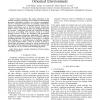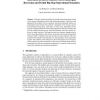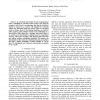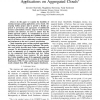CCR
2008
13 years 11 months ago
2008
Since the ARPAnet, network designers have built localized mechanisms for statistical multiplexing, load balancing, and failure resilience, often without understanding the broader ...
ADHOC
2007
13 years 11 months ago
2007
The support of peer-to-peer (P2P) resource sharing in dynamic scenarios is one of the most challenging research fields for both its expected commercial and technological impact o...
CCGRID
2010
IEEE
13 years 11 months ago
2010
IEEE
Current large distributed systems allow users to share and trade resources. In cloud computing, users purchase different types of resources from one or more resource providers usi...
AINA
2010
IEEE
13 years 11 months ago
2010
IEEE
—Virtual machines offer unique advantages to the scientific computing community, such as Quality of Service(QoS) guarantee, performance isolation, easy resource management, and ...
APLAS
2010
ACM
13 years 11 months ago
2010
ACM
This paper studies the problem of statically determining upper bounds on the resource consumption of first-order functional programs. A previous work approached the problem with an...
HASKELL
2008
ACM
14 years 18 days ago
2008
ACM
We present Haskell libraries that statically ensure the safe use of resources such as file handles. We statically prevent accessing an already closed handle or forgetting to clos...
HPDC
2010
IEEE
14 years 19 days ago
2010
IEEE
The recent emergence of clouds is making the vision of utility computing realizable, i.e. computing resources and services can be delivered, utilized, and paid for as utilities su...
CCGRID
2010
IEEE
14 years 20 days ago
2010
IEEE
In a desktop grid model, the job (computational task) is submitted for execution in the resource only when the resource is idle. There is no guarantee that the job which has starte...
CCGRID
2010
IEEE
14 years 20 days ago
2010
IEEE
Infrastructure-as-a-Service (IaaS) cloud computing offers new possibilities to scientific communities. One of the most significant is the ability to elastically provision and relin...
CCGRID
2010
IEEE
14 years 20 days ago
2010
IEEE
In this paper we examine the feasibility of running message passing applications across clouds. Our on-going Unibus project aims to provide a flexible approach to provisioning and ...




